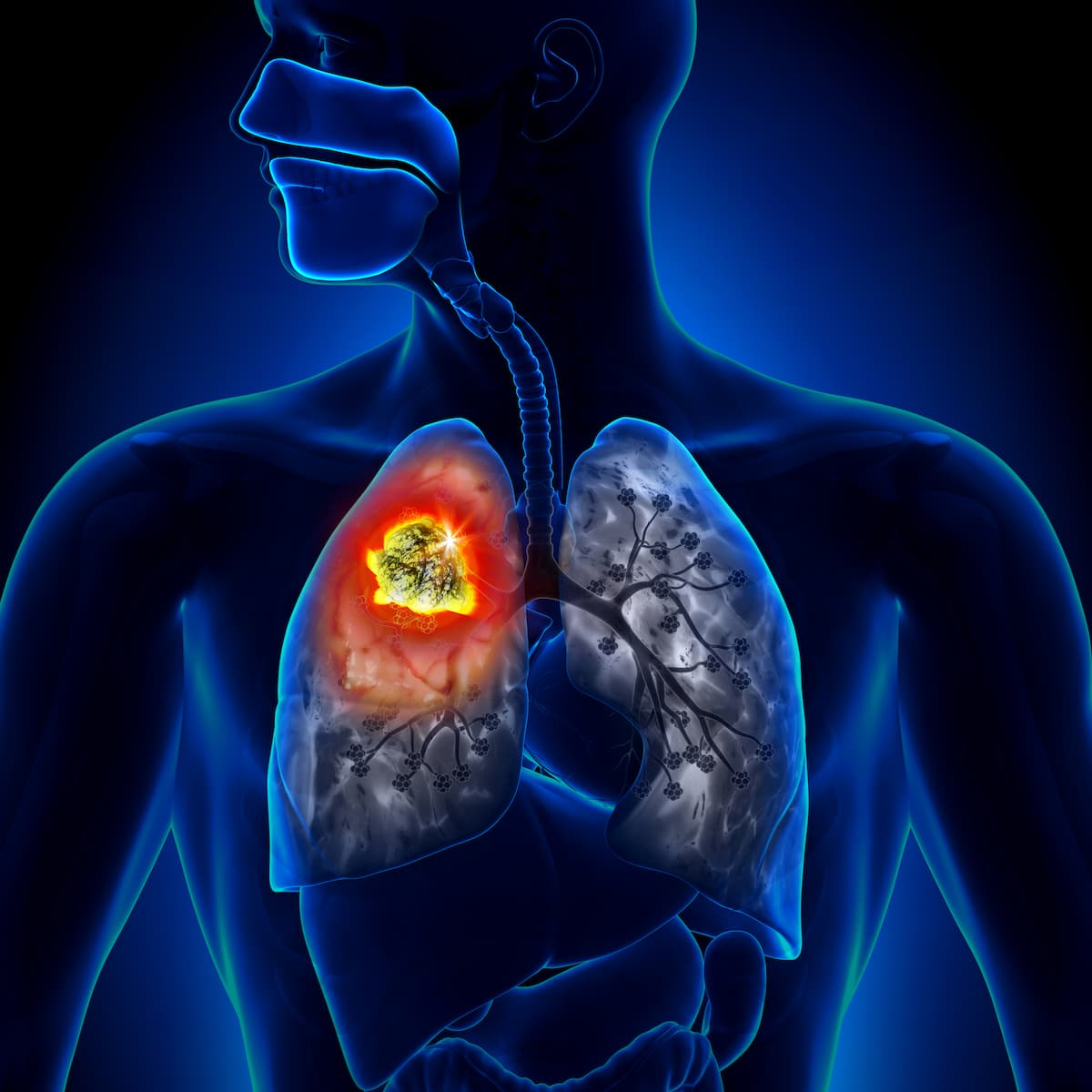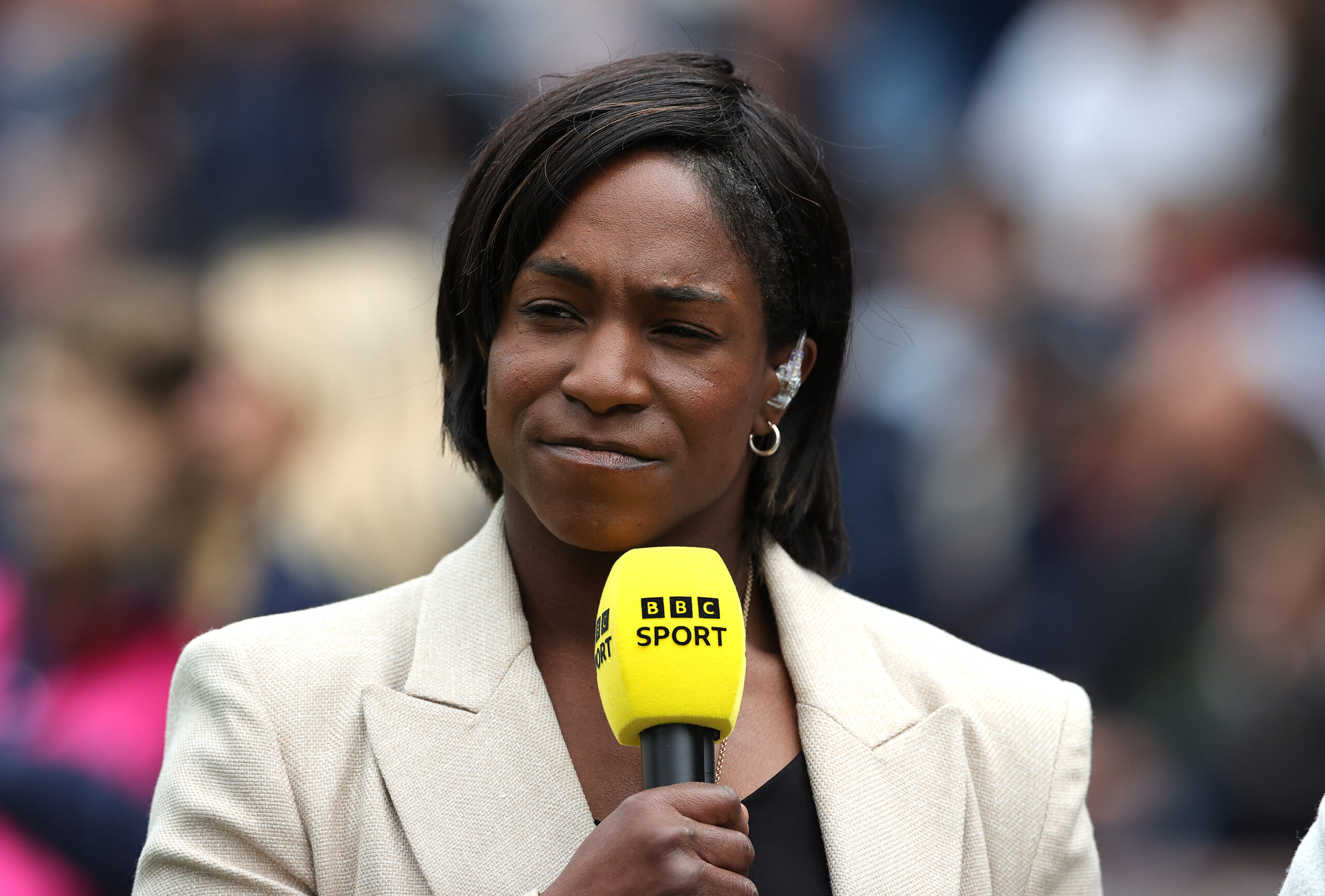- Another covid summer wave is here, but the future of vaccines is unclear The Washington Post
- There’s a war brewing between medical groups and RFK Jr. It’s about to explode. yahoo.com
- Chaotic Vaccine Policies Create Confusion for Back to School Bloomberg.com
- Fearing Medicaid coverage loss, some parents rush to vaccinate their kids North Carolina Health News
- COVID-19 vaccines for kids are mired in uncertainty amid conflicting federal guidance Kansas Reflector
Blog
-
Another covid summer wave is here, but the future of vaccines is unclear – The Washington Post
-

Chemoimmunotherapy Less Safe, Efficacious in Younger ES-SCLC Population
Results from a retrospective study showed that chemoimmunotherapy did not prolong survival vs chemotherapy in a younger ES-SCLC population.
Chemoimmunotherapy may not confer a survival benefit and result in more immune-related adverse events (AEs) and hematologic toxicity compared with chemotherapy in younger patients with extensive-stage small cell lung cancer (ES-SCLC), according to results from a multicenter, retrospective study shared in BMC Cancer.
Overall, with a median follow-up of 13.7 months, the median progression-free survival (PFS) was 4.67 months in the younger group and 5.40 months in the control group (P <.001); the median overall survival (OS) was 13.70 months vs 14.37 months, respectively (P = .028).
In the group of patients who received chemoimmunotherapy, the median PFS was 4.50 months in the younger group vs 5.57 months in the control group (P = .002); the median OS was 13.20 months vs 15.33 months (P = .012). The overall response rate (ORR) was 68.97% in the younger group vs 78.70% in the control group (P = .271), showing a nonsignificant difference. The disease control rate (DCR) was 96.55% in the young group, with 0 complete responses (CRs), 20 partial responses (PRs), 8 instances of stable disease, and 1 instance of progressive disease.
In the patients who received chemotherapy, the median PFS was 4.75 months vs 5.37 months in the younger group and control group, respectively, showing no significant difference (P = .082); the median OS was 13.70 months vs 13.73 months, also showing no significant difference (P = .407). The ORR was 60.0% in the younger group vs 80.0% in the control group (P = .016). The DCR was 96.67% in the younger group, with 0 CRs, 18 PRs, 11 instances of stable disease, and 1 instance of progressive disease.
No statistically significant difference was observed regarding ORR and DCR between the young chemoimmunotherapy and chemotherapy groups. Kaplan-Meier survival analyses revealed no significant differences in PFS or OS between the young chemoimmunotherapy and chemotherapy groups either: 4.50 months vs 4.75 months for PFS (P = .501), and 13.20 months vs 13.70 months for OS (P = .508).
In a univariate analysis considering all patients who received chemoimmunotherapy, the factors negatively associated with PFS were younger age (HR, 0.511; 95% CI, 0.333-0.784; P = .002) and liver metastases (HR, 1.629; 95% CI, 1.132-2.343; P = .009); for OS, age stratification (HR, 0.556; 95% CI, 0.349-0.885; P = .013), liver metastases (HR, 1.932; 95% CI, 1.281-2.915; P = .002), and radiotherapy (HR, 0.440; 95% CI, 0.291-0.665; P <.001) were significantly associated factors.
Separate Cox proportional hazards regression analyses, in the young group, demonstrated that radiotherapy was the only factor that significantly correlated with PFS and OS; univariate analyses revealed that radiotherapy improved PFS (HR, 0.496; 95% CI, 0.286–0.859; P = .012) and OS (HR, 0.207; 95% CI, 0.104–0.411; P <.001).
“Young patients with ES-SCLC exhibited poorer survival outcomes, with shorter PFS and OS compared to the control group,” wrote lead study author Lijuan Zhao, of the Senior Department of Oncology at The Fifth Medical Center of PLA General Hospital in Beijing, China, and the Graduate School of Chinese PLA General Hospital, with coauthors in the publication. “Chemoimmunotherapy may not demonstrate a survival advantage in young patients, as evidenced by similar PFS and OS outcomes compared to chemotherapy.”
The retrospective analysis included 347 patients with ES-SCLC, of whom 210 received chemotherapy and 137 received chemoimmunotherapy. Patients were further broken into a young group (n = 59), consisting of patients 45 years or younger, and a control group (n = 288), consisting of patients older than 45 and 75 years or younger. Chemotherapy consisted of etoposide and platinum-based drugs; when indicated, immune checkpoint inhibitors (ICIs) were added to therapy.
Eligible patients were 18 years to 75 years old with pathologically or cytologically confirmed ES-SCLC without prior systemic treatment, an ECOG performance status of 0 or 1, and at least 1 measurable lesion per RECIST v1.1 guidelines. Among the reasons for exclusion were limited-stage SCLC, previous platinum-free chemotherapy, and combined disease with non–SCLC.
Trial end points were PFS, OS, safety, and responses among the different age groups.
In the younger group, the median patient age was 40 years (IQR, 37.0-42.0) in the chemoimmunotherapy group and 39.5 years (IQR, 36.3-42.0) in the chemotherapy group; in the control group, it was 62 years (IQR, 57.0-68.0) and 62 years (IQR, 56.0-67.3). The majority of patients in all groups were male, had an ECOG performance status of 0, and had prior smoking history.
Immunotherapy was anti–PD-1 drugs in 51.7% of the younger group and 33.3% of the older group, and anti–PD-L1 drugs in 48.3% and 66.7%. The most common chemotherapy regimen was etoposide plus carboplatin, except for in the younger chemotherapy group, where it was etoposide plus cisplatin.
Regarding safety, 86.44% of the younger group and 82.97% of the control group experienced a treatment-related AE (TRAE). The most common AEs were hematologic toxicity and gastrointestinal toxicity; the younger group had a higher incidence of thrombocytopenia (25.42% vs 14.24%; P = .033). Immune-related AEs occurred in 30.51% of the younger group and 11.46% of the control group (P <.001); they included pneumonitis (11.86% vs 2.43%; P = .003) and skin rash (11.86% vs 1.40%; P <.001).
“These findings suggest that chemoimmunotherapy may not be as effective in young patients with ES-SCLC and underline the need for tailored treatment strategies in this population,” the study authors concluded.
Reference
Zhao L, Xiong Q, Long Y, et al. Efficacy and safety of first-line chemoimmunotherapy in young patients with extensive-stage small cell lung cancer: a multicenter retrospective study. BMC Cancer. 2025;25(1):1136. doi:10.1186/s12885-025-14524-y
Continue Reading
-

Guest starring… Maggie Alphonsi ‘jealous but proud’ as biggest ever tournament looms
Alphonsi, who played for England 74 times before retiring in 2014, has seen her fair share of support over the years, but this year’s Rugby World Cup is set to break all the records, culminating in the final at Allianz Stadium in Twickenham on 27 September.
It is expected that the showpiece will surpass the current record for the most attended women’s rugby match in history, which was set by the 66,000 who packed into the Stade de France in Paris during last year’s Olympic Games.
“In 2010 (England) hosted the World Cup, barely anyone attended,” Alphonsi said. “The final was just down the road, at Twickenham Stoop and we had just under 14,000 people.
“At the time was that was a massive landmark and a milestone in women’s rugby.
“Now, you fast-forward it on, and the final is going to be at a stadium that has just under 90,000 people, I just think that that in itself says so much about how far the women’s game has come.
“How professional the athletes are, the level of sponsorship that is there, the way this tournament has been promoted, I mean it is going to be the biggest tournament ever, the most global tournament ever. The amount of social media engagement just says so much.”
Alphonsi was part of the team that lost 13-10 to New Zealand in that final at the Stoop, but the Red Roses would go on to lift the title at Rugby World Cup 2014.
Silverware aside, the 28-time try-scorer for England is proud of the legacy she and her team helped to build, the fruit of which will be seen in a mega festival of rugby over these next few weeks.
“I’m so jealous, and I wish I was still playing to be honest,” the former flanker said. “But I am just pleased that me and many others were part of that small slice of progress that enabled it to go in the right direction.
“Back in the day you could just turn up on the day of the final and get a ticket on the door and now I am speaking to various people and they can’t even get tickets for a Pool game. That’s brilliant. I am so pleased there is a demand for it.
“To think we have sold that many (tickets) for the Pool games is brilliant, for all the nations. I am speechless and over the moon about how far the game has come.”
People will still be able to spot the woman who helped England win a record-breaking seven consecutive Six Nations crowns during the tournament, as she will have a microphone in hand as a pundit at Rugby World Cup 2025.
“I’ll be there for the BBC, covering all the games – I’m very excited,” she said.
“I know it’s going to be awesome. I would love England to be in the final but whatever two teams are there, I know that they’ll deliver for us. It’s going to be a great tournament.”
Continue Reading
-

Israel Adesanya makes stunning prediction for Dricus du Plessis vs. Khamzat Chimaev at UFC 319
Israel Adesanya sees Dricus du Plessis vs. Khamzat Chimaev going the way most others do: Either the challenger steamrolls the champion early, or it could be a long night for the undefeated Chimaev.
Du Plessis and Chimaev headlined UFC 319 this Saturday in Chicago. Adesanya, a former two-time UFC middleweight champion, discussed the bout between his past opponent and rival, and one of the most wildcard fighters the sport has ever seen.
Advertisement
“I’ve looked at this fight two ways: Khamzat comes out, just grabs a hold of DDP and just drags him into deep water of the first or the second and finishes him, or DDP matches Khamzat’s crazy with his type of crazy, and his willingness to not quit, and then drags Khamzat into deep waters of the third and fourth and fifth rounds and gets him out of there,” Adesanya said on his YouTube channel. “That’s how I see this fight going.”
At UFC 305 a year ago, du Plessis submitted Adesanya in the fourth round to successfully defend his title for the first time. “Stillknocks” went on to win a lopsided decision against Sean Strickland in a rematch at UFC 312 in February, while Chimaev earned his first UFC title shot with a destruction of Robert Whittaker at UFC 308 this past October.
Adesanya doesn’t think Chimaev will change anything up, and will get shot out of a cannon the moment the referee says “fight.”
“He’s going to go after him in the first,” Adesanya said. “So Dricus just has to be very mindful. He felt strong, but I felt strong as well. We matched strength. But he’s just stubborn. He won’t quit. …
Advertisement
“I just think on the ground, Khamzat will be, offensively, all over him, but Dricus has to defensively sound to not get submitted, or get TKO’d.”
In the end, Adesanya knows it’s a tough fight to call. “The Last Stylebender” is quite confident that the longer the fight goes, the more it favors the champion. The big question: Can du Plessis get through the early chaos?
“DDP, I think, can weather the storm and probably finish Khamzat later on, because Khamzat, if it gets to Round 3, 4, 5, it’s going to be a problem,” Adesanya explained. “It probably won’t get to Round 5. I say Round 3 or 4, DDP.
“But if Khamzat’s going to win, it’s going to be in the first round. It’s going to be impressive, it’s going to be spectacular, it’s going to be violent. But yeah, I’m going to go with DDP.”
Continue Reading
-

What is a black moon? Rare lunar phenomenon coming this month
You’ve heard the term “once in a blue moon,” but you may not know of a black moon.
A black moon will be in the night sky later this month, according to timeanddate.com.
It’s a special kind of moon phase — and if you want to spot one, you’re out of luck. Black moons are invisible.
So while you won’t be able to see it, the next black moon will be in the sky on Aug. 23.
Black moons are typically the opposite of a blue moon, which is when we’re able to view two full moons in the same month.
Black moons are monthly or seasonal, according to timeanddate.com.
A monthly black moon is defined as the second new moon in a single calendar month. This is the most common black moon, and it occurs about once every 29 months.
A seasonal black moon is defined as the third new moon in a season of four new moons. These black moons are a bit rarer and occur about once every 33 months, according to timeanddate.com.
August’s black moon is considered a seasonal one.
Like any other new moon, it will be invisible in the sky, because the moon is between the Earth and the sun in its orbit. Its non-illuminated side faces Earth, and only the far side is illuminated.
If you purchase a product or register for an account through a link on our site, we may receive compensation. By using this site, you consent to our User Agreement and agree that your clicks, interactions, and personal information may be collected, recorded, and/or stored by us and social media and other third-party partners in accordance with our Privacy Policy.
Continue Reading
-
PUBG Announces End Of Support For PS4, Xbox One Players This Fall – MMORPG.com
- PUBG Announces End Of Support For PS4, Xbox One Players This Fall MMORPG.com
- Console Service Update: Moving to Current-Gen and Ending Legacy Support pubg.com
- You Will Not Be Able to Play PUBG on THESE Devices From November! TechJuice
- Bad Week for PS4 as Another Popular Game Ends Support PlayStation LifeStyle
- PUBG: Battlegrounds no longer playable on PS4 and Xbox One from 13th November Eurogamer
Continue Reading
-

The Smith & Wesson Model 940 in 9mm is available again
The Smith & Wesson Model 940 features a
fluted barrel and a 5-shot cylinder. The checkered finger groove grip
allow for a more secure hold.From a partnership with Davidson’s – one of one of US’s largest firearm distributors – the “new” Model 940 is still a J-frame 5-shot carry revolver chambered in 9mm (9x19mm) featuring the snag-free concealed hammer and a 2.17″/55 mm barrel. To the classic design modernity has added a nicely fluted barrel, low-profile sights including a larger tritium XS front night sight to improve the speed and ease of target acquisition, and black cherry color VZ grips – not just for aesthetics: the checkered finger groove grip allow for a more secure hold.

The Smith & Wesson Model 940 comes with
low-profile sights including a larger tritium XS front night sight.Being an hammerless revolver, the Model 940 is a double-action only handgun and combines traditional looks with modern performance. To the delight of purists and sensible people, it also lacks the internal safety lock which, albeit “internal”, includes a hideous looking hole located above the cylinder release latch on the frame.
Weight of the 9mm Model 940 revolver is 667 g: together with the short barrel and overall compact size, this makes the 940 a pretty comfortable everyday carry gun, providing you are a wheelgun fan and not a semiauto guy. At $999, the price of the Smith & Wesson 940 Model is a bit heftier that its weight and other snubnosed revolvers, though (the price includes three full moon clips, necessary when using rimless cartridges like the 9mm), and the fact it’s marketed through Davidson’s makes it an “american thing”, so to say. However, it’s always nice to see a classic back.
Continue Reading
-

Hurricane Erin rapidly intensifies to category five storm
Hurricane Erin underwent rapid intensification, in which a storm strengthens by at least least 34mph in a 24-hour period.
Erin’s winds had intensified from 100mph early in the hours of Saturday morning to 160mph, Mr Brennan said.
Next week, Hurricane Erin is forecast to move gradually northward, past the east of the Bahamas and up towards the Outer Banks of North Carolina.
The storm will generate life-threatening surf and rip currents up almost “entire east coast” of the United States next week, said Mr Brennan.
Florida and the mid-Atlantic states will see the most dangerous surf conditions, he said.
Bermuda could also see “life-threatening” surf conditions and heavy rainfall, Mr Brennan added.
Because of gale force winds, the US Coast Guard is imposing restrictions for vessels at ports on the St Thomas and St John in the US Virgin Islands, as well as six municipalities in Puerto Rico, including San Juan.
The National Oceanic and Atmospheric Administration (Noaa), the US government’s primary weather agency, has predicted an “above normal” Atlantic hurricane season this year.
The number of tropical storms that reach category four and five is projected to increase due to global warming.
Continue Reading
-

Shericka Jackson on top in pet 200m event
Half-lap queen Shericka Jackson made further strides towards returning to form, winning the women’s 200m in a season’s best at the Silesia Diamond League 2025 on Saturday (16 August).
The Jamaican superstar had some work to do as she trailed Great Britain’s Daryll Neita coming out of the bend.
The five-time Olympic sprint medallist turned on the afterburners to close out the race in style, crossing the finish in a time of 22.17 seconds. She held off a strong challenge from Brittany Brown (22.21) and Favour Ofili (22.25) in second and third place, respectively.
Clocking a season’s best, suggested Jackson was fast returning to her best form just in time for the Tokyo Olympic World Championships next month. Jackson will be looking to become only the second woman, after Allyson Felix, to win three straight 200m world titles.
The Jamaican athletics star is slowly but surely regaining lost form since she withdrew from last year’s Paris 2024 Olympic Games due to injury. Jackson is yet to reach the lofty heights of 2023 when she became the fastest woman alive over the 200m and the fifth fastest ever in the 100m.
Continue Reading
-

Taylor Swift’s “Sourdough Era” Might Actually Be A Super Bowl 60 Halftime Clue
- Taylor’s “sourdough era” may be an easter egg for her being the Super Bowl 60 Halftime performer.
- Grind City Media ties all her bread talk to the San Francisco 49ers’ mascot, Sourdough Sam.
- Another sign points to Taylor’s mention of “47 seconds” and the 47th Eras Tour stop being Levi’s Stadium, home of the San Francisco 49ers.
Taylor Swift’s “sourdough era” might not be about carbs at all. According to Grind City Media’s Jessica Benson, it could actually be a halftime-show-sized Easter egg. Insert *pretends to be shocked GIF* here. Swifties are already known for treating Taylor’s every move like a breadcrumb trail, but this one might be leading straight to Super Bowl 60.
Let’s back up. Just this week, Taylor revealed on New Heights—the podcast hosted by her beau Travis Kelce and his brother Jason—that she thinks about sourdough “60% of the time.” She described how much she’s baking and how deep she’s gone into the bread rabbit hole, leading to a slew of headlines about Taylor officially going full carb. We even wrote about it here at Delish, wondering if she was slowly becoming the patron saint of fermentation.
But Benson thinks otherwise. In a new clip, she breaks down the theory: Super Bowl 60 will be played at Levi’s Stadium, home of the San Francisco 49ers. Their mascot? None other than Sourdough Sam. Suddenly, the sourdough chatter doesn’t feel so random.
It doesn’t stop there. Benson also notes that Taylor thanked fans for screaming “for 47 seconds” at a past show—Levi’s Stadium just so happened to be the 47th stop on the Eras Tour. Add it all up, and sourdough starts looking less like a hobby and more like a clue baked right into the halftime chatter.
Now, am I, a secret 33-year-old Swiftie, saying Taylor Swift is performing at Super Bowl 60? Not officially. But am I now side-eyeing every baguette I see, wondering if it’s a coded message from her? You betcha.
Continue Reading